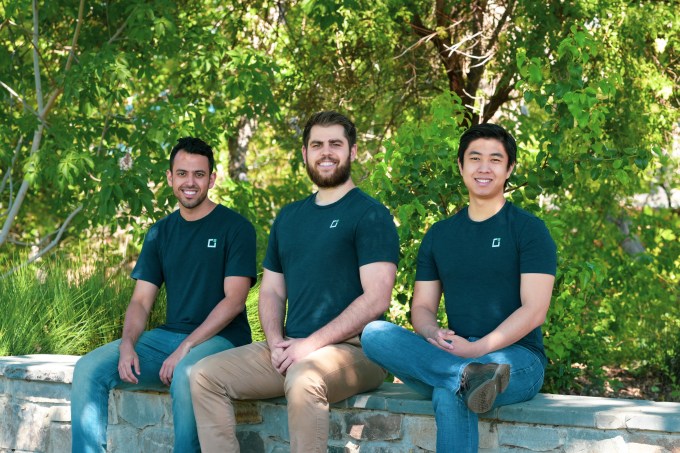Solidus Labs, a company that says its surveillance and risk-monitoring software can detect manipulation across cryptocurrency trading platforms, is today announcing $20 million in Series A funding. It’s pretty great timing, given the various signals coming from the U.S. government just last week that it’s intent on improving its crypto monitoring efforts — such as the U.S. Treasury’s call for stricter cryptocurrency compliance with the IRS.
Of course, Solidus didn’t spring into existence last week. Rather, Solidus was founded in 2017 by several former Goldman Sachs employees who worked on the firm’s electronic trading desk for equities. At the time, Bitcoin was only becoming buzzier, but while the engineers anticipated different use cases for the cryptocurrency, they also recognized that a lack of compliance tools would be a barrier to its adoption by bigger financial institutions, so they left to build some.
Fast forward and Solidus today employs 30 people, has raised $23.75 million, and is in the process of doubling its head count to address growing demand. On Friday, we talked with Solidus’s New York-based co-founder and CEO Asaf Meir — one of those former Goldman engineers — about the company’s new round, which was led by Equity Partners, with participation from Hanaco Ventures, Avon Ventures, 645 Ventures, the cryptocurrencies derivative exchange FTX, and a sprinkling of government officials, including former CFTC chair Chris Giancarlo and former SEC commissioner Troy Paredes. We also talked about the kinds of crypto crimes that are on the rise. Excerpts from that chat follow, edited lightly for length.
TC: Who are your customers?
AM: We work with exchanges, broker dealers, OTC desks, liquidity providers and regulators — anyone who is exposed to the risk of buying and selling cryptocurrencies, crypto assets or digital assets, whatever you want to call them.
TC: What are you promising to uncover for them?
AM: What we detect, largely speaking, is volume and price manipulation, and that has to do with wash trading, spoofing, layering, pump and dumps and an additional growing library of crypto-native alerts that truly only exist in our unique market.
We had a 400% increase in inbound demand over 2020 driven largely by two factors, I think. One is regulatory scrutiny. Globally, regulators have gone off to market participants, letting them know that they have to ask for permission, not forgiveness. The second reason — which I like better — is the drastic institutional increase in appetite toward exposure for this asset class. Every institution, the first question they ask any executing platform is: ‘What are your risk mitigation tools? How do you make sure there is market integrity?’
TC: We talked a couple of months ago, and you mentioned having a growing pipeline of customers, like the trading platform Bittrex in Seattle. Is demand coming primarily from the U.S.?
AM: We have demand in Asia and in Europe, as well, so we will be opening offices there, too.
TC: Is your former employer Goldman a customer?
AM: I can’t comment on that, but I would say there isn’t a bank right now that isn’t thinking about how they’re going to get exposure to crypto assets, and in order to do that in a safe, compliant and robust way, they have to employ crypto-specific solutions.
Right now, there’s the new frontier — the clients we’re currently working with, which are these crypto-pure exchanges, broker dealers, liquidity providers and even traditional financial institutions that are coming into crypto and opening a crypto operation or a crypto desk. Then there’s the new new frontier; your NFTs, stablecoins, indexes, lending platforms, decentralized protocols and God knows what [else] all of a sudden reaching out to us, telling us they want to do the right thing, to ensure the users on their platform are well-protected, and that trading activities are audited, and [to enlist us] to prevent any manipulation.
TC: How does your subscription service work and who is building the tech?
AM: We consume private data from our clients — all their training data — and we then put it in our detection models, which we ultimately surface through insights and alerts on our dashboard, which they have access to.
As for who is building it, we have a lot of fintech engineers who are coming from Goldman and Morgan Stanley and Citi and bringing that traditional knowledge of large trading systems at scale; we also have incredible data scientists out of Israel whose expertise is in anomaly detection, which they are applying to financial crime, working with us.
TC: What do these crimes look like?
AM: When we started out, there was much more wholesale manipulation happening whether through wash trading or pump and dumps — things that are more easy to perform. What we’re seeing today are extremely sophisticated manipulation schemes where bad actors are able to exploit different executing platforms. We’re quite literally surfacing new alerts that if you were to use a legacy, rule-based system you wouldn’t be able to [surface] because you’re not really sure what you’re looking for. We oftentimes have an alert that we haven’t named yet; we just know that this type of behavior is considered manipulative in nature and that our client should be looking into it.
TC: Can you elaborate a bit more about these new anomalies?
AM: I’m conflicted about how much can we share of our clients’ private data. But one thing we’re seeing is [a surge in] account extraction attacks, which is when through different ways, bad actors are able to gain access to an account’s funds and are able in a sophisticated way to trade out of the exchange or broker dealer or custodian. That’s happening in different social engineering-related ways, but we’re able, through account deviation and account profiling, to alert the exchange or broker dealer or financial institution we’re working with to avoid that.
We’re about detection and prevention, not about tracing [what went wrong and where] after the fact. And we can do that regardless of knowing even personal identifiable information about that account. It’s not about the name or the IP address; it’s all about the attributes of trading. In fact, if we have an exchange in Hong Kong that’s experiencing a pump and dump on a certain coin pair, we can preemptively warn the rest of our client base so they can take steps to prepare and protect themselves.
TC: On the prevention front, could you also stop that activity on the Hong Kong exchange? Are you empowered by your clients to step in if you detect something anomalous?
AM: We’re bomb-sniffing dogs, so we’re not coming to disable the bot. We know how to take the data and point out manipulation, but it’s then up to the financial institution to handle the case.
Pictured above: Seated left to right is CTO Praveen Kumar and CEO Asaf Meir. Standing is COO Chen Arad.
Powered by WPeMatico



 Excited to help launch
Excited to help launch 
